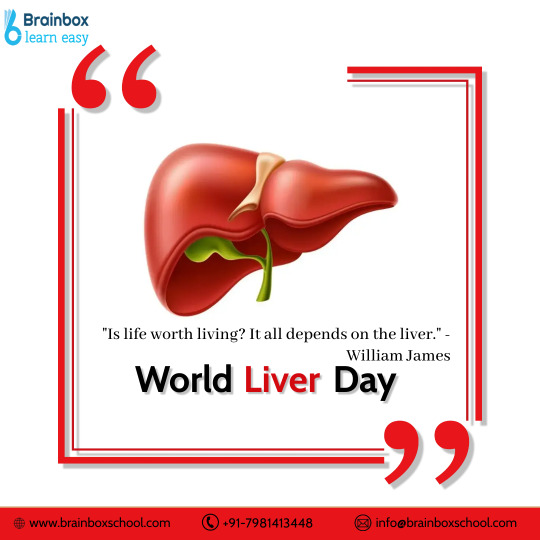#metabolic conditions
Explore tagged Tumblr posts
Text
Government Diet Advice Leads to Yo-Yo Dieting
I searched for anything on government diet advice and yo-yo dieting from misinformation and there was nothing so here goes
Weight management requires both daily activity and eating real food to get essential nutrients. Image by PublicDomainPictures from Pixabay During lockdown, many people went from commuting daily to work, walking to the bus stop, going out during breaks, commuting home or going out. While at work we cannot snack. An entire industry of delivering food to workplaces has grown out of the shorter��
#antioxidants and vitamin C#conflicts of interest in official health advice#daily activity commuting to work#eatwell guide#geography and lifestyle and genetics#giving unemployed weight loss jab#government diet advice leads to yo-yo dieting#jab for jobs#jabs for jobless#lack of information about micronutrients#lack of public health information from trusted sources#metabolic conditions#micronutrients and macronutrients#moving around every day#no two people respond to food in the same way#not even identical twins respond to food the same way#public health must exclude corporate funding#putting on more weight than lost#reducing insulin resistance from low carb diet#restriction and reduction is not successful dieting#routine daily activity#starchy carbohydrates are empty calories#there is no one-size-fits-all with food#too much medicine and not enough healthcare#Type 2 diabetes from blood sugar and insulin resistance#we are all unique#weight management from lifestyle and genetics#yo yo dieting
0 notes
Note
I'm glad you mention people with metabolic disorders like, as a fat guy with a metabolic disorder it's really frustrating seeing how people dismiss that as a factor in weight gain and maintenance, including doctors :/ like the number of professionals I have been to in my life- let alone regular old ignorant assholes I encounter- who think telling me to eat healthy and exercise more is going to unlock the secret skinny person that they've miraculously discovered hidden inside a lazy fatty... like you of all people should know my thyroid numbers buddy
I also think that like, something got twisted here. If you're fat you shouldn't give up on your body. You should still eat healthy. Even if eating a perfectly healthy and functional diet doesn't lose you a single pound, you should still do it and it's really important to drive that home to people that are overweight because they are at a higher risk of depression and developing eating disorders, many of which can include binge and binge/restrict type disorders. Because fat people also have a harder time moving around, its just easier for fat people not to. But again, you should build up muscle strength and be able to move around comfortably regardless of how much you weigh.
Being fat doesn't mean, necessarily, that your body is swimming in glucose and carbs and salt, but fat people that don't see themselves ever getting "better" might allow for that to happen because of how much they hate the way they look. Thats why "healthy at any size" is an important movement. Its not about saying "yep. Any size is healthy no matter what!" its that you should try to to be healthy no matter what the scale says. Thats *always* a good thing and *always* better for you.
As a personal anecdote there was a time of my life that I had stopped exercising and didn't give a SHIT what I was putting in my body. I had developed a very bad walking gait that was actively injuring my joints. My core muscles were so weak I couldn't sit up in a chair for longer than twenty minutes without the base of my spine throbbing in level 10 stabbing pain that was so bad it made me dizzy. My gut health was awful and every trip to the toilet was miserable and exhausting.
Then, I started eating right. Then I started exercising. I opted to sit at my desk instead of lounging in bed or on my couch, in an upright chair to start building my core up again. I went on walks. I got a physio consultation and found out that I literally had to relearn how to walk, and even now have to make sure I'm not rocking side to side on my ankles and grinding the joint into the socket with each step, every time I go walking. I have not stepped on a scale in four years. I'm honestly not sure if I am comfortable doing that. I don't know how much weight I lost, but I know it's not nothing because pants that were tight on me three years ago now fall off my ass if I don't cinch them with a belt. (That i had to cut new notches into, because when i bought it I could barely buckle it up around my middle, but now the smallest notch was still too loose.)
I'm not really thinking about my size, I'm not thinking about the number. I'm thinking about how good it feels to feel nourished. How much I can appreciate the sweetness of young vegetables because I rarely eat things like snack cakes anymore. I can go on a six hour hike and my legs feel fine. (even if Im a little slow.) I am more in tune with my body and I don't eat until my stomach hurts, feel guilty, and then punish myself for the rest of the week by not eating anything... only to inhale everything in the cupboard at 2am because of how much I've starved myself. Going to the toilet isn't painful and miserable anymore. I am still fat. I probably always will be, thats the phenotype I've been given. But I just am happier, more comfortable, and more capable since I started giving a shit about my body regardless of what size and shape it is.
All that to say that distorting this and the ideas that go into this sort of positive, healthy mindset into "if you just eat better and work out you'll be skinny" no the fuck you won't. the healthy skinny svelte version of me you're making up in your head doesn't exist, even at my peak, even at my most healthy, I'm gonna be chunky and stout and I'm fine with that. And if you're my Doctor, you better get fine with it too.
#as some context i also have some severe hormonal conditions related to being intersex#which is going to be addressed this year so hopefully my hormones will be more in balance going forward#and i have no idea what thats going to do to the rest of my body physically#its very likely theres going to be a huge change in my metabolism and fat distribution#and#i dont care#being healthy is my priority i care a lot less about what my body looks like#and more that its functioning properly#i am also what we in the biz call a 'small fat'#like i dont actually take up a lot of space#im just really chunky and have a huge ass and noticeable belly#even at my heaviest about a decade ago pre top surgery with EEE breasts i never crested 280 lbs#so take what i say with a grain of salt#i would estimate currently my weight is between 200 and 250#but i genuinely dont know lol numbers stress me out#i know that other fat people have different experiences than me so i just wanted to clarify
14 notes
·
View notes
Text
truly detest how pcos tags/forums/etc are absolutely crawling with terfs
#(okay to rb but stay in your lane)#maybe i just want to look and see if anyone else has experienced what i went through today without seeing someone going like#'you'll never be a REAL woman because you DON'T HAVE OVARIES#and will NEVER understand the TRUE WOMANLY EXPERIENCE of having A VERY DISRUPTIVE AND COMPLEX ENDOCRINE AND METABOLIC DISORDER'#like i think there are more important (read: actual) targets to direct our frustration at here than#[checks notes] getting mad at a trans woman for saying she relates to some of the problems caused/faced by having pcos#like. idk. the fucking medical system and lack of research/treatment options#(also. christ. reducing every person w pcos into the 'woman' category automatically bc 'ovary'.#even though it's literally an intersex condition. yikes.)#also i don't know about y'all but i don't wish this on anyone? regardless of gender??#i actually don't want trans women to have to experience this in order to be considered a True Woman#because i don't want ANYBODY to have to experience this. it sucks! it's not fucking fun!#i just wanted to try and see if other people have gone through the same thing i have. not expand my blocklist by half a mile tonight.#i wanna talk about me#even though i didn't exactly find what i was looking for (😔) and i had to play fucking whack-a-terf while searching#if there's any bright side to be found it's the number of posts/people affirming pcos as an intersex condition/identity#i saw someone say 'if you don't want the [intersex] umbrella for yourself you don't have to take it#but it's nice to have in the closet for a rainy day'#and. man. yeah.
30 notes
·
View notes
Text
honestly the fact that willie nelson is still alive and in relatively good health for his age (as far as im aware) makes him living proof that smoking ungodly amounts of marijuana nearly 24/7 for 60+ years will not condemn u to an early death. like that dude is 90 fuckin years old... it baffles me
#plz dont use this as an excuse to downplay drug dependence tho...#i am like 90% sure that genetics have a huge influence in how effectively ur body metabolizes stuff + any underlying conditions u have
4 notes
·
View notes
Photo
Reminds me of the time that bitch gave me kombucha…

DO NOT DO THIS.
This makes me so angry.
If you work in a movie theater and you do this I have no respect for you.
My younger brother is Type 1 Diabetic.
When we go to a movie theater, we always get him diet soda. If he were to get regular when we asked for diet, we would not give him the insulin he would need for it. If that happens, his blood sugar level could go so high he could go into a coma, go blind, or even die.
If somebody gave him regular soda instead of diet without telling us, that person could be responsible for a nine-year-old being killed or blinded.
Just thinking about that makes me so angry. I get scared every time we take him to a movie in case the people working there saw this picture and decide to do the same thing.
Please signal boost this so people know.
#not as bad as the stories above but#I have a heart condition a fast metabolism and a body that is EXTREMELY SENSITIVE to even the smallest amount of things#some bitch gave me a sample of a strong kombucha#I asked if it was okay for me to drink before I took the sample because I wasn’t 21 yet (stupidly instead of asking about the alcohol)#he said it’s okay for kids to drink#I took the sample in instantly could tell that there was some alcohol in it#so I asked him if there was alcohol and he said yes but that the amount was so small it “didn’t matter’’#I was laying down to recover for a good 30min to an hour#even if it doesn’t affect most people some people have severe sensitivities#tell them about shit like that#health concerns#health#celiac disease#diet coke#lactose intolerance#gluten intolerance#rant#movie theater#diet#soda#heart condition
869K notes
·
View notes
Text
Viruses cause smallpox, measles, yellow fever, influenza, polio, AIDS, the common cold, and COVID-19.³
3. It is worth observing that the division between infectious and noninfectious causes of disease is useful but imperfect. Some chronic and organ diseases and types of cancer are caused by infectious agents; for example, stomach cancer is usually caused by the bacterium H. pylori. Conversely, outcomes in infection are shaped by underlying health conditions, including chronic disease (consider, for instance, the influence of metabolic disease on mortality rates in COVID-19 cases).
"Plagues Upon the Earth: Disease and the Course of Human History" - Kyle Harper
#book quotes#plagues upon the earth#kyle harper#nonfiction#virus#smallpox#measles#yellow fever#influenza#polio#aids#common cold#covid 19#infectious diseases#chronic disease#organ disease#stomach cancer#cancer#bacterium#bacteria#helicobacter pylori#health conditions#metabolic disease#mortality
0 notes
Text
Understanding Anti-Obesity Medications: A Comprehensive Guide
Exploring the Mechanism of Anti-obesity medications: A Comprehensive Guide Understanding the mechanism of anti-obesity medications can seem like a daunting task, but it doesn’t have to be. Let’s break it down in a way that’s easy to digest, no pun intended. If you want more information about diet, please visit my website! Here Understanding Anti-Obesity Medications: A Comprehensive…
#anti-obesity medications#appetite suppressants#Bupropion-Naltrexone#effective weight loss#fat absorption inhibitors#healthcare consultation#Liraglutide#medical weight loss#medication side effects#metabolic rate increase#obesity management#Obesity Treatment#obesity-related health conditions#Orlistat#Phentermine-Topiramate#semaglutide#weight loss benefits#weight loss drugs#weight loss solutions#Weight Management
0 notes
Text
Metabolic Health Conditioning with Science of Living

In an era where health and wellness have become paramount, understanding and improving our metabolic health is crucial. Science of Living, a leading name in metabolic health conditioning, offers comprehensive solutions tailored to enhance overall well-being and address various metabolic disorders.
Understanding Metabolic Health
Metabolic health refers to the efficiency with which your body converts food into energy and manages various functions like blood sugar levels, cholesterol, and blood pressure. An optimal metabolic rate ensures that the body functions smoothly, preventing conditions like diabetes, obesity, cardiovascular diseases, and thyroid disorders. Metabolic health is influenced by genetics, lifestyle choices, and dietary habits. Therefore, personalized approaches are essential for effective management and improvement.
Science of Living's Approach
Science of Living stands out in the field of metabolic health by providing a holistic and personalized approach to metabolic conditioning. The company's methodologies integrate advanced scientific research with practical health solutions, ensuring that each client receives a plan tailored to their unique needs.
1. Personalized Health Assessments
The journey with Science of Living begins with an in-depth assessment of an individual's metabolic health. This involves analyzing factors such as metabolic rate, hormone levels, nutrient deficiencies, and lifestyle habits. Using cutting-edge diagnostic tools, Science of Living’s experts create a comprehensive profile of the client’s metabolic condition. This personalized assessment is the cornerstone of their health conditioning programs, ensuring that interventions are targeted and effective.
2. Customized Metabolic Health Plans
Based on the initial assessment, Science of Living designs customized metabolic health plans. These plans address specific issues such as weight management, blood sugar control, and thyroid function. The programs are not one-size-fits-all; instead, they are tailored to fit individual health profiles, preferences, and goals. This personalized approach enhances the effectiveness of the interventions and ensures sustainable results.
3. Integrated Wellness Programs
Science of Living integrates various aspects of wellness into their metabolic health programs. This includes:
Nutritional Guidance: Clients receive tailored dietary plans that focus on nutrient-dense foods to support metabolic health. The dietary recommendations are designed to balance macronutrients and micronutrients, optimize energy levels, and manage weight.
Physical Activity Plans: Exercise is a critical component of metabolic conditioning. Science of Living provides customized workout plans that align with each client’s fitness level and health goals. These plans are designed to improve metabolic rate, enhance cardiovascular health, and build muscle strength.
Lifestyle Modifications: The company also addresses lifestyle factors that impact metabolic health, such as sleep quality, stress management, and daily routines. By incorporating strategies for improving sleep hygiene and stress management, Science of Living helps clients create a balanced lifestyle that supports overall well-being.
4. Continuous Monitoring and Support
Science of Living emphasizes the importance of ongoing support and monitoring to achieve long-term success. Clients have access to regular follow-up sessions, where their progress is evaluated, and adjustments are made to their health plans as needed. This continuous support ensures that clients stay on track with their health goals and can make informed decisions based on their progress.
Conclusion
Science of Living’s approach to Metabolic health conditioning company combines scientific expertise with personalized care. By focusing on individualized assessments, customized plans, and integrated wellness strategies, the company helps clients achieve and maintain optimal metabolic health. In a world where metabolic disorders are increasingly common, Science of Living offers a beacon of hope for those seeking to improve their health and enhance their quality of life. Through their comprehensive and supportive programs, they are paving the way for a healthier and more vibrant future.
#Science of Living#Science of Living Company Bangalore#metabolic consultant#Metabolic Fitness Program#Metabolic health conditioning company
0 notes
Text
Transforming Health: The Role of Metabolic Fitness Programs and Health Conditioning Companies
In the ever-evolving landscape of health and wellness, metabolic fitness has emerged as a pivotal focus for both individuals and health conditioning companies. Metabolic fitness, which refers to the body’s ability to efficiently manage and utilize energy, is crucial for maintaining optimal health, preventing chronic diseases, and enhancing overall well-being. Central to this concept are metabolic fitness programs, designed to improve metabolic health through targeted interventions. This article explores the significance of metabolic fitness programs and the role of metabolic health conditioning companies in revolutionizing health management.
The Essence of Metabolic Fitness Programs
Metabolic fitness programs are comprehensive health initiatives aimed at optimizing metabolic functions. These programs typically incorporate personalized nutrition plans, physical activity regimens, and lifestyle modifications tailored to an individual’s metabolic profile. By focusing on metabolic efficiency, these programs help individuals manage weight, improve energy levels, and reduce the risk of metabolic disorders such as diabetes, cardiovascular diseases, and metabolic syndrome.
A key component of metabolic fitness programs is the emphasis on individualized plans. Since metabolic rates and responses vary among individuals, personalized approaches ensure that each person receives interventions that are most effective for their unique metabolic characteristics. These programs often start with detailed assessments, including metabolic rate testing, body composition analysis, and blood work, to gather crucial data on an individual’s metabolic health. Based on this data, health professionals design bespoke plans that may include dietary recommendations, exercise routines, and stress management techniques.
Metabolic Health Conditioning Companies: Pioneers in Wellness
Metabolic health conditioning companies are at the forefront of this health revolution, providing specialized services and programs aimed at enhancing metabolic fitness. These companies employ a multidisciplinary approach, integrating the expertise of nutritionists, fitness trainers, medical professionals, and wellness coaches to deliver holistic and effective health solutions.
One of the primary roles of metabolic health conditioning company is to educate individuals about the importance of metabolic health. By raising awareness and providing scientifically-backed information, these companies empower individuals to take proactive steps towards improving their metabolic fitness. Education often includes workshops, seminars, and personalized consultations that cover topics such as nutrition, physical activity, sleep, and stress management.
Moreover, these companies leverage cutting-edge technology to monitor and track metabolic health. Wearable devices, mobile apps, and advanced diagnostic tools enable continuous monitoring of metabolic parameters, allowing for real-time adjustments to fitness programs. This technology-driven approach ensures that individuals receive timely feedback and support, enhancing the effectiveness of their metabolic fitness journeys.
Success Stories and Benefits
The impact of metabolic fitness program and health conditioning companies can be seen in countless success stories. Individuals who have participated in these programs often report significant improvements in their metabolic health, including better blood sugar control, reduced body fat, increased muscle mass, and enhanced energy levels. These improvements not only contribute to better physical health but also enhance mental and emotional well-being, as individuals feel more energized, motivated, and capable.
For instance, a study published in the Journal of Obesity found that participants in a structured metabolic fitness program experienced an average weight loss of 10% of their body weight over six months, along with improvements in insulin sensitivity and lipid profiles. Such results underscore the effectiveness of these programs in managing and preventing metabolic diseases.
Conclusion
In conclusion, metabolic fitness programs and metabolic health conditioning company play a crucial role in modern health management. By focusing on individualized approaches and leveraging advanced technology, these programs enhance metabolic efficiency, prevent chronic diseases, and promote overall well-being. As awareness of metabolic health continues to grow, these initiatives will undoubtedly become integral to personal and public health strategies, paving the way for a healthier future. Through continuous innovation and education, metabolic health conditioning company are transforming the way we approach health, ensuring that metabolic fitness becomes a cornerstone of wellness for all.
#Metabolic Fitness Program#metabolic health conditioning compan#metabolic health conditioning#metabolic health
0 notes
Text

🌟 Join us in commemorating World Liver Day on April 19th! 🌟
👉 Did you know that your liver is one of the hardest-working organs in your body? It plays a vital role in digestion, metabolism, and detoxification. That's why it's crucial to keep it healthy!
💡 On #WorldLiverDay, let's raise awareness about liver health and the importance of prevention. From hepatitis to fatty liver disease, understanding these conditions can help us take proactive steps towards better liver health.
#🌟 Join us in commemorating World Liver Day on April 19th! 🌟#👉 Did you know that your liver is one of the hardest-working organs in your body? It plays a vital role in digestion#metabolism#💡 On#let's raise awareness about liver health and the importance of prevention. From hepatitis to fatty liver disease#understanding these conditions can help us take proactive steps towards better liver health.
0 notes
Text

The Significance of Blood Tests in Addressing Vertigo:
1. Evaluation of Metabolic and Hormonal Factors: Blood tests serve as valuable tools for assessing metabolic parameters like blood glucose and electrolyte balance, shedding light on hormonal imbalances, particularly related to thyroid dysfunction, which contribute significantly to vertigo. Incorporating cutting-edge technologies, such as continuous glucose monitoring, holds potential for real-time insights into metabolic influences on vertigo. Additionally, examining hormonal fluctuations in various life stages, such as menopause, offers a nuanced understanding of vertigo triggers.
2. Understanding Anemia and Blood Disorders: The role of blood in oxygen transport is crucial for preventing vertigo, and conditions like anemia disrupt this process. A comprehensive examination, including a complete blood count (CBC), proves essential in detecting anemia and various blood disorders, providing insights into potential contributors to vertigo. Combining advanced imaging techniques like functional magnetic resonance imaging (fMRI) with blood tests offers a detailed understanding of physiological changes associated with anemia-induced vertigo. Exploring nutritional deficiencies, such as vitamin B12 and iron, enhances the comprehension and management of anemia-related vertigo.
3. Detection of Infections: Blood tests measuring parameters like white blood cell count and C-reactive protein (CRP) offer crucial insights into infections, guiding clinicians toward targeted treatment strategies addressing both the infection and associated vertigo. Advanced molecular diagnostics, including polymerase chain reaction (PCR) testing, enhance precision in identifying infectious causes of vertigo. Investigating chronic infections and their potential link to persistent vertigo symptoms adds depth to our understanding.
4. Assessment of Lipid Profile: Abnormal lipid levels, particularly high cholesterol, may compromise blood flow to the inner ear, contributing to vertigo. Lipid profile tests are essential in evaluating the cardiovascular health of vertigo patients, emphasizing the interconnectedness of systemic health and vestibular function. Exploring the impact of lifestyle factors on lipid metabolism broadens intervention possibilities for lipid-related vertigo.
5. Unraveling Autoimmune Contributions: Blood tests detecting antibodies associated with autoimmune conditions play a pivotal role in understanding autoimmune-induced vertigo, particularly in conditions like rheumatoid arthritis or lupus. Exploring immunomodulatory therapies and personalized treatment plans based on autoimmune markers provides insights into managing autoimmune-induced vertigo. Investigating the relationship between autoimmune vertigo and comorbidities adds complexity to our understanding.
6. Monitoring Drug Levels: Regular blood tests for drug levels ensure optimal therapeutic benefits without adverse effects, addressing the delicate balance between pharmaceutical management and vestibular health. Advances in pharmacogenomics hold promise in tailoring drug regimens based on individual genetic profiles to minimize medication-induced vertigo. Additionally, exploring the long-term effects of chronic medication use on vestibular function offers a comprehensive view of medication-related vertigo.
Doctors recommend undergoing full body health checkups, including blood tests and other essential tests, at regular intervals to detect and manage conditions such as vertigo early.
#blood tests#blood disorders#metabolic disorders#infections#autoimmune conditions#lipid profile#full body checkups#full body health checkups#regular full body checkups#regular health checkups#anemia
0 notes
Video
youtube
60-MIN KILLER HIIT WORKOUT (weight loss cardio, total body metabolic con...
#youtube#Prepare to sweat burn and sculpt with my KILLER 60-min metabolic HIIT workout! Weight loss cardio total body metabolic conditioning with wei
0 notes
Text
december workout plan



day 1: 30 minute cardio + 10 minute yoga
day 2: 30 minute dumbbell cardio + 8 minute stretch
day 3: 30 minute lower body + 15 minute leg stretch
day 4: 30 minute arms & abs + 10 minute yoga
day 5: 44 minute metabolic conditioning
day 6: 10 minute abs + 30 minute yoga
day 7: 30 minute hiit w/ weights + 15 minute stretch
day 8: rest day OR 30 minute walking cardio + 8 minute stretch
day 9: 36 minute strength & cardio + 15 minute stretch
day 10: 30 minute lower body + 15 minute leg stretch
day 11: 5 minute warm up + 30 minute upper body & core + 8 minute stretch
day 12: 38 minute metabolic conditioning
day 13: 17 minute abs + 30 minute stretch
day 14: 25 minute dumbbell hiit
day 15: rest day OR 20 minute cardio + 15 minute stretch
day 16: 30 minute tabata hiit & strength
day 17: 30 minute lower body
day 18: 40 minute upper body & core
day 19: 30 minute metabolic conditioning
day 20: 20 minute abs + 26 minute yoga
day 21: 32 minute hiit & strength
day 22: rest day OR 30 minute cardio + stretch
day 23: 5 minute warm up + 45 minute strength & cardio + 8 minute stretch
day 24: 43 minute lower body
day 25: rest day (merry christmas!)
day 26: 20 minute pilates cardio & abs
day 27: 30 minute upper body
day 28: 17 minute abs + 30 minute yoga
day 29: 5 minute warm up + 30 minute dumbbell hiit + 8 minute stretch
day 30: 45 minute walking cardio + 10 minute abs + 8 minute stretch
day 31: rest day OR 30 minute mobility
#girlblog#girlblogger#girlblogging#that girl#dream girl#it girl#self care#self love#glow up#becoming that girl#self help#self improvement#self development#wonyoungism#fitness blog#fitness#health aesthetic#health and lifestyle#health#health blog#wellness#wellness girl#green juice girl aesthetic#green juice girl#pink pilates princess aesthetic#pink pilates girl#pink pilates princess#clean girl aesthetic#clean girl#exercise
2K notes
·
View notes
Text
"Get Rid of Diabetes Fast: The 7-Day Miracle Plan"
Are you tired of living with diabetes? Are you ready to take control of your health and say goodbye to this condition for good? Look no further! We have the perfect solution for you—a 7-day miracle plan that will transform your life and help you reclaim your health. Get ready to bid farewell to diabetes and embark on a journey towards a happier, healthier you! Say Goodbye to Diabetes: Unveiling…

View On WordPress
#Blood sugar#Diabetes#Endocrine System#gestational diabetes#glucose regulation#health#insulin#medical conditions#metabolic disorder#pancreas#Type 1 Diabetes#Type 2 Diabetes
0 notes
Text
Finding out that my wacky needing a tooth pulled out because my permanent tooth was growing into my milk tooth that wouldn't get out of my mouth on its own... I was still losing milk teeth as a fifteen or sixteen year old. I was in my last year of junior high/middle school!!
But yeah, got a sliding hiatal hernia from a minor car accident (riding in the trunk, so no seatbelt, bumped my head, immediately heard a hissing sound and felt the hot acid leaking up into my throat...)
Paternal grandmother had a hernia, bio-mother had a herniated spinal disc, sister had kyphosis (one form of EDS also is chiefly known by causing kyphosis, so likely related...)..
Me explaining my grandma and mom that all the health problems since childhood were not “early-onset arthritis,” ��carpel tunnel,” “just recurrent hernias,” “diverticulitis” or “crooked teeth” but instead all part of a genetically inherited disease like:

#sometimes it really is zebras#Ehlers Danlos syndrome#watching other healthcare professionals who Do Not Care trying to blame obesity (I had very fast metabolism and#never had to worry about my weight before the injury which limited movement...)#or diabetes (I am not diabetic!!) or trying to force me to exercise on hard unstable ground yiiiikes#the coworkers at that one place were disastrous busybodies who did not care to read at all about my condition#kept treating me like a liar#learned it's better to just say I'm sick and let people headcanon flu or COVID or whatever instead of telling them the truth and having the#think I'm wrong or try to argue with me about what I've been diagnosed by an actually highly competent specialized doctor#chronic illness
89 notes
·
View notes
Photo

New Post has been published on https://www.knewtoday.net/unveiling-the-longest-recorded-coma-in-history-extraordinary-cases-of-prolonged-unconsciousness/
Unveiling the Longest Recorded Coma in History: Extraordinary Cases of Prolonged Unconsciousness

In medical science, a coma is a state of profound unconsciousness in which a person is unresponsive to external stimuli and cannot be awakened. It is a severe neurological condition that can be caused by various factors, such as traumatic brain injury, stroke, lack of oxygen to the brain, metabolic disorders, infections, or drug overdose.
During a coma, the person is unable to consciously perceive their surroundings, speak, or move purposefully. However, basic life-support functions such as breathing and circulation are usually preserved. The level and depth of coma can vary, with some individuals showing minimal brain activity and others displaying some limited responses.
Comas can last for a short period or extend for an indefinite duration, depending on the underlying cause and the individual’s response to treatment. Medical professionals assess coma patients using standardized scales, such as the Glasgow Coma Scale, to evaluate their level of consciousness and neurological function.
Medical professionals monitor and assess comatose patients closely using various diagnostic tests, such as brain imaging, electroencephalography (EEG), and neurological examinations, to determine the cause and potential prognosis. Treatment aims to address the underlying condition, provide supportive care, and promote recovery if possible. However, the outcome of a coma can vary widely, from full recovery to long-term disabilities or even death.
Treatment of coma focuses on addressing the underlying cause, providing supportive care, and preventing complications such as infections, pressure sores, or blood clots. In some cases, medications or surgery may be necessary to reduce swelling or treat the underlying condition. Rehabilitation is often required for individuals who emerge from a coma to regain lost physical and cognitive functions.
Causes of Coma
Drug Poisoning:
Responsible for 40% of comatose conditions. Some drugs, when used under particular conditions, can harm or decrease synaptic functioning in the ascending reticular activating system (ARAS), preventing the system from effectively arousing the brain.
Drug side effects such as irregular heart rate and blood pressure, as well as excessive breathing and perspiration, may also indirectly damage ARAS function and lead to coma. Because that drug poisoning is the cause of a high proportion of comas, hospitals screen all comatose patients by watching pupil size and eye movement via the vestibular-ocular reflex.
Cardiac Arrest:
Lack of oxygen, which usually results from cardiac arrest, is the second most prevalent cause of coma, accounting for around 25% of cases.
The Central Nervous System (CNS) relies heavily on oxygen to power its neurons. Hypoxia, or a lack of oxygen in the brain, causes sodium and calcium from outside the neurons to drop and intracellular calcium to rise, compromising neuron communication.
In the brain, a lack of oxygen induces ATP fatigue, cellular breakdown due to cytoskeleton damage, and nitric oxide generation.
Stroke-Related Coma
A stroke-related coma accounts for 20% of all comatose states. Blood flow to a portion of the brain is limited or blocked during a stroke.
Blood flow may be restricted as a result of an ischemic stroke, a brain hemorrhage, or a tumor. A lack of circulation to brain cells prevents oxygen from reaching the neurons, causing them to become disturbed and die. When brain cells die, brain tissue deteriorates, potentially impairing function.
Other Biological Conditions:
Trauma, severe blood loss, starvation, hypothermia, hyperthermia, hyperammonemia, aberrant glucose levels, and a variety of other biological conditions account for the remaining 15% of comatose patients. Additionally, studies reveal that 1 in every 8 patients with severe brain damage goes into a coma.
A coma scale is a mechanism for determining the degree of coma.
Glasgow Coma Scale
The Glasgow Coma Scale is a neurological scale that tries to provide a reliable, objective manner of monitoring a person’s conscious state for both initial and ongoing assessment. The criteria of the scale are applied to a patient, and the resulting points give a patient score ranging from 3(Three) indicating profound unconsciousness to 14 (Fourteen). GCS was originally designed to determine the degree of consciousness following a head injury, but it is now used by first responders, EMS, and clinicians to assess all acute medical and trauma patients. It is also used in hospitals for chronic patient monitoring, such as critical care.
Longest Period of Time in Coma
The longest recorded coma in medical history lasted for 37 years. The patient, Terry Wallis, was involved in a car accident in 1984 at the age of 19 and remained in a coma until 2003. During that time, he was unresponsive and completely dependent on medical care.
In 2003, Terry unexpectedly regained consciousness and started to communicate with his family. Although he was still severely disabled and had limited cognitive abilities, his recovery was considered remarkable given the length of time he spent in a coma.
It’s important to note that Terry Wallis’s case is exceptional and not representative of typical comas. Coma duration varies widely among individuals, and most comas are of much shorter duration. Medical professionals continue to research and study comes to better understand their causes and potential treatments.
Elaine Esposito :
According to Guinness World Records, he held the record for the longest duration of time in a coma, having lost consciousness in 1941 and died in that state more than 37 years later. Edwarda O’Bara and Aruna Shanbaug later broke Esposito’s record for the longest comas.
She was rushed to a hospital at the age of six with a burst appendix and underwent an appendectomy on August 6, 1941. She never regained consciousness after being sedated. She fell into convulsions as the procedure was drawing to a conclusion, her fever soared to 107.6 °F (42.0 °C), and physicians thought she would not survive the night. The origin of the issue was contested, with some claiming Elaine had encephalitis and others claiming her brain did not receive enough oxygen during the procedure.
Her parents spent the first 10 months of her coma in a Chicago hospital until they could no longer afford her treatment, at which time they moved her home so her mother Lucy could care for her 24 hours a day, seven days a week.
Throughout her extended coma, she had periods of both deep slumber and open-eyed unconsciousness, and she gained only a few pounds, reaching 85 pounds (39 kg). Elaine has overcome a variety of different health issues throughout the years, including more stomach surgery, pneumonia, measles, and a collapsed lung. The family subsequently relocated to Tarpon Springs, Florida, and she was also flown to Lourdes, France, to pray for a miracle.
Elaine died at the age of 43 years and 357 days, having been in a coma for 37 years and 111 days.
Edwarda O’Bara :
After catching pneumonia in December 1969, he spent 42 years in a diabetic coma beginning in January 1970.
At the age of 16, O’Bara suffered pneumonia on December 20, 1969. Her condition deteriorated over the course of two weeks, and she was admitted to the hospital. According to her relatives, O’Bara “woke up shivering and in considerable pain because the oral type of insulin she had been taking wasn’t reaching her bloodstream” around 3 a.m. on January 3, 1970.
Her relatives hurried her to the hospital, where she succumbed to a diabetic coma. Edward begged her mother, Kaye O’Bara, not to leave her side before she slipped into a coma. She was fed by a tube, and Kaye repositioned her every two hours to prevent bedsores. Kaye also read to her, played music for her, and conversed with her. Joseph, her father, also quit his work to care for her. Kaye passed away in 2008, at the age of 81.
In conclusion, prolonged comas are rare and extraordinary medical conditions that challenge our understanding of the human brain and consciousness. The recorded cases of individuals who have spent extended periods in comas, such as Terry Wallis, Elaine Esposito, Edwarda O’Bara, and Sarah Scantlin, serve as remarkable examples of the resilience and unpredictability of the human body.
While the experience of individuals during a coma remains largely unknown, these cases highlight the potential for unexpected recoveries and the enduring dedication of caregivers. The medical community continues to explore the underlying causes and potential treatments for comas, seeking to improve our understanding and provide better care for affected individuals.
Though each coma case is unique, the stories of these individuals inspire hope and further our commitment to advancing medical research and support systems for those affected by coma. With ongoing research, continued advancements in medical technology, and dedicated healthcare professionals, we aim to improve outcomes and enhance the quality of life for individuals who experience prolonged comas.
Ultimately, the study of comas and their associated challenges fuels our collective pursuit of knowledge and pushes the boundaries of medical science, bringing us closer to unlocking the mysteries of consciousness and improving the lives of those affected by these profound states of unconsciousness.
#Brain damage#Coma#Critical care#Medical condition#Medical emergencies#Metabolic disorder#Prognosis#Rehabilitation#Stroke#Traumatic brain injury#Unconsciousness
0 notes